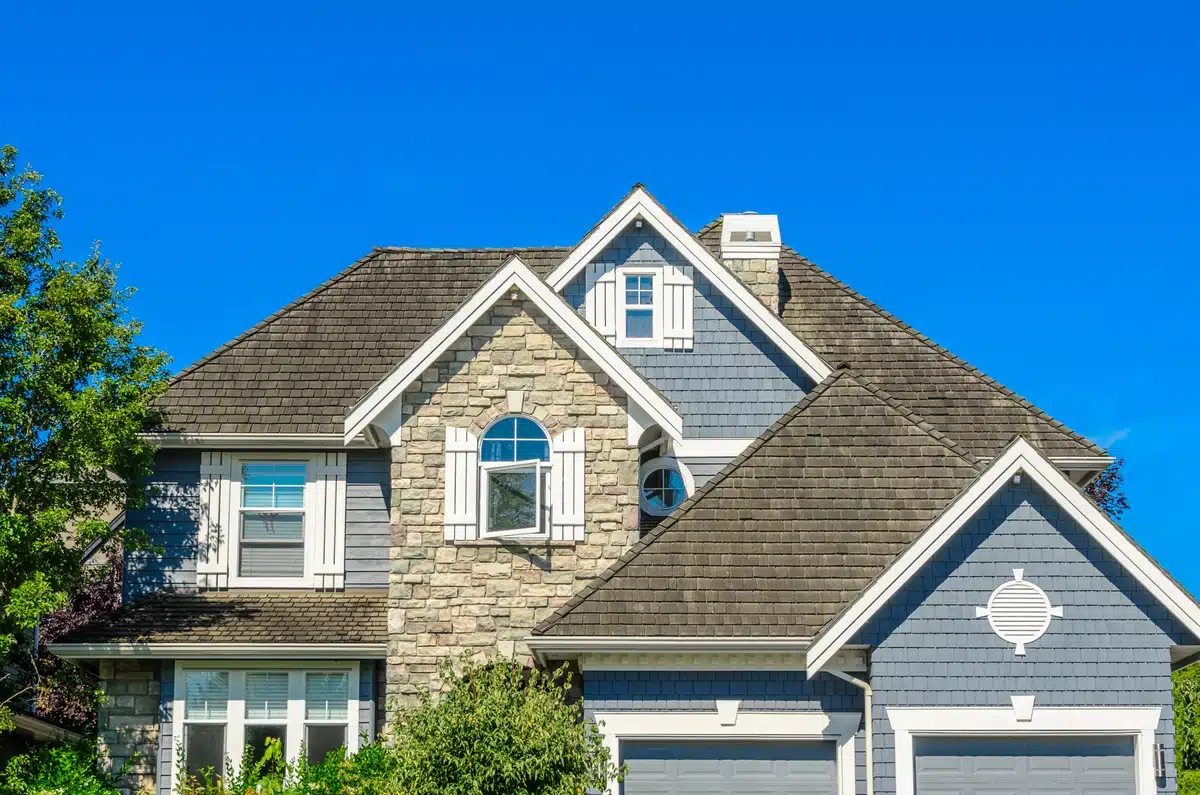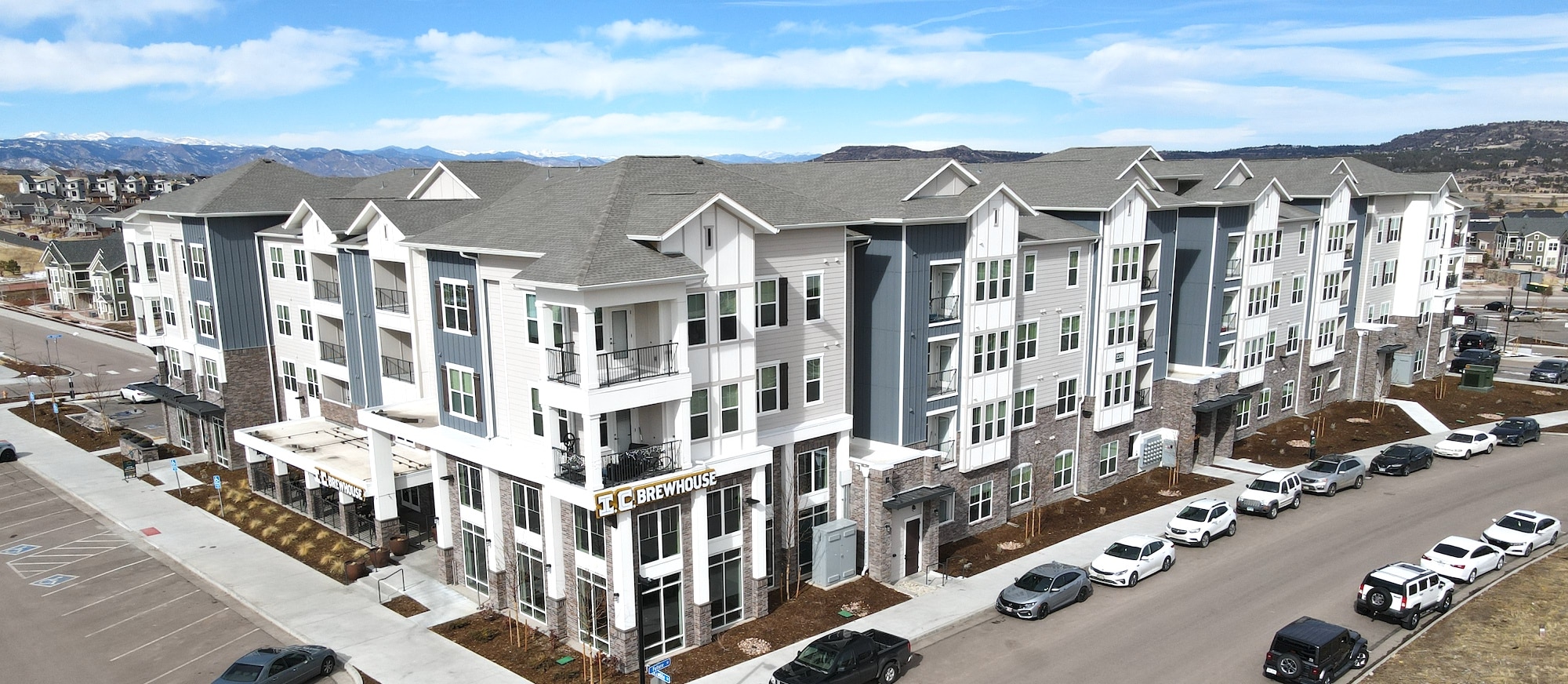how to pay for a new roof
Owning a home is a dream come true for many, but it also comes with its fair share of responsibilities. Not only do you have the regular responsibilities of keeping it clean and paying bills, but you usually have to keep up with big maintenance tasks as well.
One of the most significant investments you’ll make as a homeowner is replacing your roof. While the prospect of funding a new roof may seem daunting, careful planning and understanding the available financing options can ease the burden.

In this blog post, we’ll explore:
Various financing methods
The ideal time to replace your roof
The average costs of different roofing materials
Ready to learn how to pay for a new roof? Keep reading to understand all of your options!
5 Financing Options for a New Roof
Table of Contents
There’s no two ways around it. A roof replacement? Expensive.
Financial strain is one of the biggest reasons why homeowners put off their roof replacements. However, delaying your replacement can lead to long-term issues that make for even more expensive roof and home repairs.
Luckily, these days, you have lots of options when it comes time to finance a new roof. Here are 5 of the most popular solutions:
- Personal Savings
The most straightforward and cost-effective way to pay for a new roof is by using your personal savings. If you have been diligent with your savings, it can significantly reduce the financial strain of a roof replacement project. Make sure to set aside a portion of your monthly income specifically for home maintenance, including roof repairs and replacements. [how to pay for a new roof]
- Home Equity Loan
Home equity loans allow you to borrow against the equity you’ve built in your home. These loans typically offer competitive interest rates and can provide a lump sum that you can use to fund your roof replacement. Be cautious, as defaulting on a home equity loan could result in losing your home.

- Roofing Financing Programs
Many roofing companies offer financing programs tailored to suit different budgets and credit scores. These programs often come with low or zero-interest promotional periods, making it more manageable to spread the cost of your new roof over time. This is a great way to learn how to pay for a new roof without immediate financial strain.
- Credit Cards
Using a credit card to pay for a new roof should be a last resort, given their high-interest rates. However, if you can pay off the balance quickly or take advantage of zero-interest introductory offers, it could be a viable short-term option. For those wondering how to pay for a new roof in a pinch, this can be an alternative solution.
- Government Assistance Programs
In some cases, government agencies offer assistance programs or low-interest loans for home improvements, including roof replacements. Check with local and federal authorities to see if you qualify for any such programs. [how to pay for a new roof]
When to Replace Your Roof
As a responsible homeowner, it is essential that you understand the right time to replace your roof. Timely replacement can help you avoid water damage and other issues that are caused by an aging and malfunctioning roof.
Here are some signs that it may be time to replace your roof:
Age of the Roof: The age of your roof is a crucial factor in determining whether it’s time for a replacement. Asphalt shingle roofs typically last 20 to 25 years, while metal, tile, and slate roofs can last significantly longer, up to 50 years or more. If your roof is nearing or has exceeded its expected lifespan, it’s time to start planning for a replacement.
Roofing Material Deterioration: Inspect your roof regularly for signs of wear and tear, such as curling or missing shingles, cracked tiles, or granule loss on asphalt shingles. These are clear indicators that your roof is deteriorating and requires immediate attention.
Leaks and Water Damage: Persistent roof leaks and water damage in your attic are serious warning signs that your roof is no longer providing adequate protection. Addressing these issues promptly can prevent further damage to your home’s interior and structure.
Energy Efficiency: An aging roof may lose its energy efficiency, leading to increased utility bills. If you notice a rise in heating and cooling costs, it could be due to a deteriorating roof that is no longer effectively insulating your home. [how to pay for a new roof]
Average Costs of Different Roofing Materials
When you are planning out your budget for your roof replacement, it’s important to consider the fact that different roofing materials have significantly different costs. Here are some of the most popular roofing materials, along with their average prices:
Asphalt Shingles
Asphalt shingles are the most common roofing material in North America due to their affordability and ease of installation. The average cost ranges from $4-15 per square foot. However, higher-quality shingles or complex installations may increase the overall cost.

Metal Roofing
Metal roofing offers durability and longevity, with an average cost of $10-$25 per square foot installed. While the upfront cost is higher than asphalt shingles, the long-term benefits and energy efficiency make it a popular choice for many homeowners.
Wood Shakes
Wood shakes provide a natural, rustic look but come at a higher price tag of $6-$18 per square foot installed. Additionally, they require more maintenance and may not be suitable in areas prone to fire hazards.
Slate Roofing
Slate is an elegant and long-lasting roofing material with an average cost of $15-30 per square foot. Its high cost is justified by its exceptional durability, aesthetics, and minimal maintenance requirements. Keep in mind that with slate roofing, you may face additional costs, as the heavy weight of the material occasionally requires extra reinforcement.
If you’d rather leave your high school math skills in the past, we totally understand. Learning how to pay for a new roof can feel overwhelming, but with the right information, it becomes manageable.
By understanding the various financing options and knowing the signs of when to replace your roof, you can make an informed decision and protect your home investment. Let this guide on how to pay for a new roof serve as your starting point to make the best choice for your roofing needs. [how to pay for a new roof]
Roofers You Can Trust
Taking on big home projects can feel lonely and isolating, but it doesn’t have to be! When you work with Tectum Roofing, you can be confident, knowing that you have a knowledgeable and experienced team on your side. Whether you are replacing a residential or commercial roof, our roofing contractors can help walk you through every step of the process. Contact us today to get your free estimate! [how to pay for a new roof]



